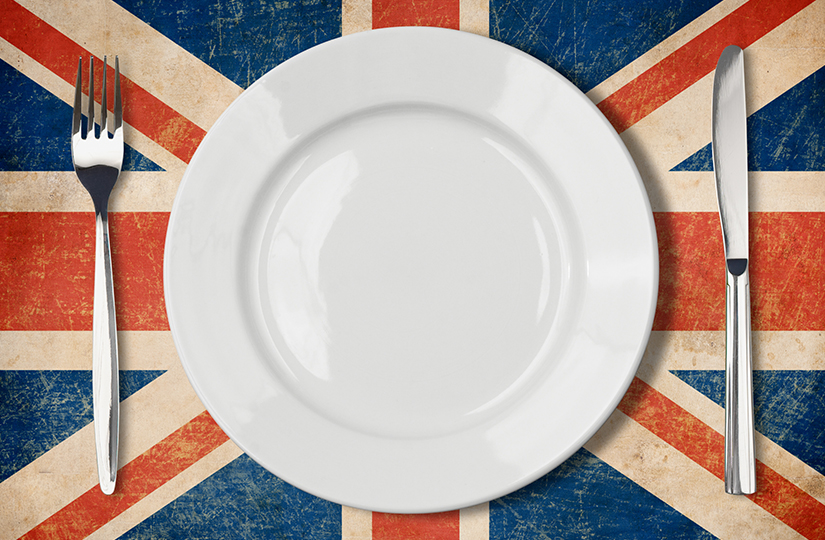A Food Strategy with some missing ingredients
It had been hoped that the government’s recently published Food Strategy would put some more flesh on the bones of government policy, highlighting clearly the direction of travel to help decision-making at farm and estate level.
The document was awaited with excitement in some quarters, after the enthusiasm that greeted the publication of the Henry Dimbleby-led independent National Food Strategy (NFS), published in two parts across 2020 and 2021.
But the government’s Food Strategy has met a much more muted response and may go down in history as a missed opportunity. It is unlikely to answer the many questions of farmers and estate owners trying to map out their own individual strategies.
The government is either silent on – or does not support – many of Dimbleby’s key recommendations and the man himself has said “it doesn’t set out a clear vision as to why we have the problems we have now and it doesn’t set out what needs to be done.”
Food production
Many had hoped it would set out a clear vision and pathway for the food and farming sector that recognised and addressed the significant health, climate and biodiversity challenges, alongside the imperative to raise food productivity – the latter being the common theme in almost all of Defra secretary George Eustice’s speeches in recent years.
One of the few organisations that has been warm in its response has been the NFU, which called the strategy “a clear milestone”, with the government recognising the importance of domestic food production and maintaining English farms’ productive capacity.
The government says its aim is to broadly maintain the current level of food produced domestically, through productivity gains, targeting land-use change to benefit the environment on the least productive land.
It talks about supporting farmers in building more resilient, sustainable, and diversified farm businesses, using ‘targeted vehicles’ like the Sustainable Farming Incentive (SFI). Innovation will also be a key component in this drive to sustainably boost production and profitability, and this will be supported by funding through programmes like the Farming Innovation Programme.
There will be support to grow the alternative protein sector, which the strategy says will be about ‘complementing traditional livestock sectors’, not competing with it. Policies are also proposed to develop the horticulture sector, to boost home-grown fruit and vegetable production.
However, on food production it does feel as if the strategy could have gone further as, with a growing population, we are going to need to increase production of the right types of food, otherwise we will be importing it.
Farmers do need support in building more resilient, sustainable businesses, but based on our discussions with many clients and farmers we do not expect the take up of the SFI to be very high. It is also worth noting that the funding for the Farming Innovation Programme is less than £40m per year, so a small proportion of the overall budget.
Other than some general mentions of changing farming practices to reduce environmental impacts, there is little detail on how to do this. But there are plenty of options. Scotland, for example, is pushing much greater use of farm carbon accounting so that farmers get to understand emissions and storage better; at the same time, it is promoting tools to help farmers become more productive.
The strategy makes some very general statements on farming, but it is hard to see what the vision is. Perhaps it will be set out in the Land Use Framework which has been promised in 2023? The debate around land use has become highly polarised and it would be helpful to have a framework which sets out clear recommendations and national and local targets.
Healthy diets
The government acknowledges in the strategy that there is a need ‘to shift diets’ but it is almost completely silent about what to do and how to do it.
At present, in the UK, the NHS spends £18bn per year treating obesity-related conditions and they contribute to 64,000 deaths in England each year.
The Dimbleby report called for reductions in the consumption of meat and dairy, understandably sparking alarm among many farmers, but the government has steered away from this. The recommendation for a sugar and salt reformulation tax on manufacturers also appears to have been dropped.
The government position is that it does not want to tell people what to do and this ideology is clear in the strategy. Critics argue that the government intervenes in almost every market in some way – including food and drink markets – so why not get involved more in something as important as the nation’s health.
However, the government is promising that the Department for Health and Social Care will return to the issue in its forthcoming health disparities white paper which will set out further measures to reduce obesity and diet related ill health.
The beginning of a conversation?
The strategy says that this is just the beginning of a conversation, building on the independent review and existing work. It’s a familiar line to farmers – it is now four years since the release of Defra’s Health and Harmony consultation on the future of agricultural policy, which also said in its foreword that it was the ‘beginning of a conversation’.
Views of the Food Strategy probably come down to personal views on the existing food and drink sector. Those who are broadly happy with the current system, will probably support the strategy, as it largely supports the status quo. Those who feel that significant change is needed – for economic, environmental and health reasons – are the ones that are likely to be most disappointed.
Henry Dimbleby’s final recommendation to government was to “set clear targets and bring in legislation for long-term change.” So far, the government has chosen not to do that, but hopefully it will be part of the conversation to come.






